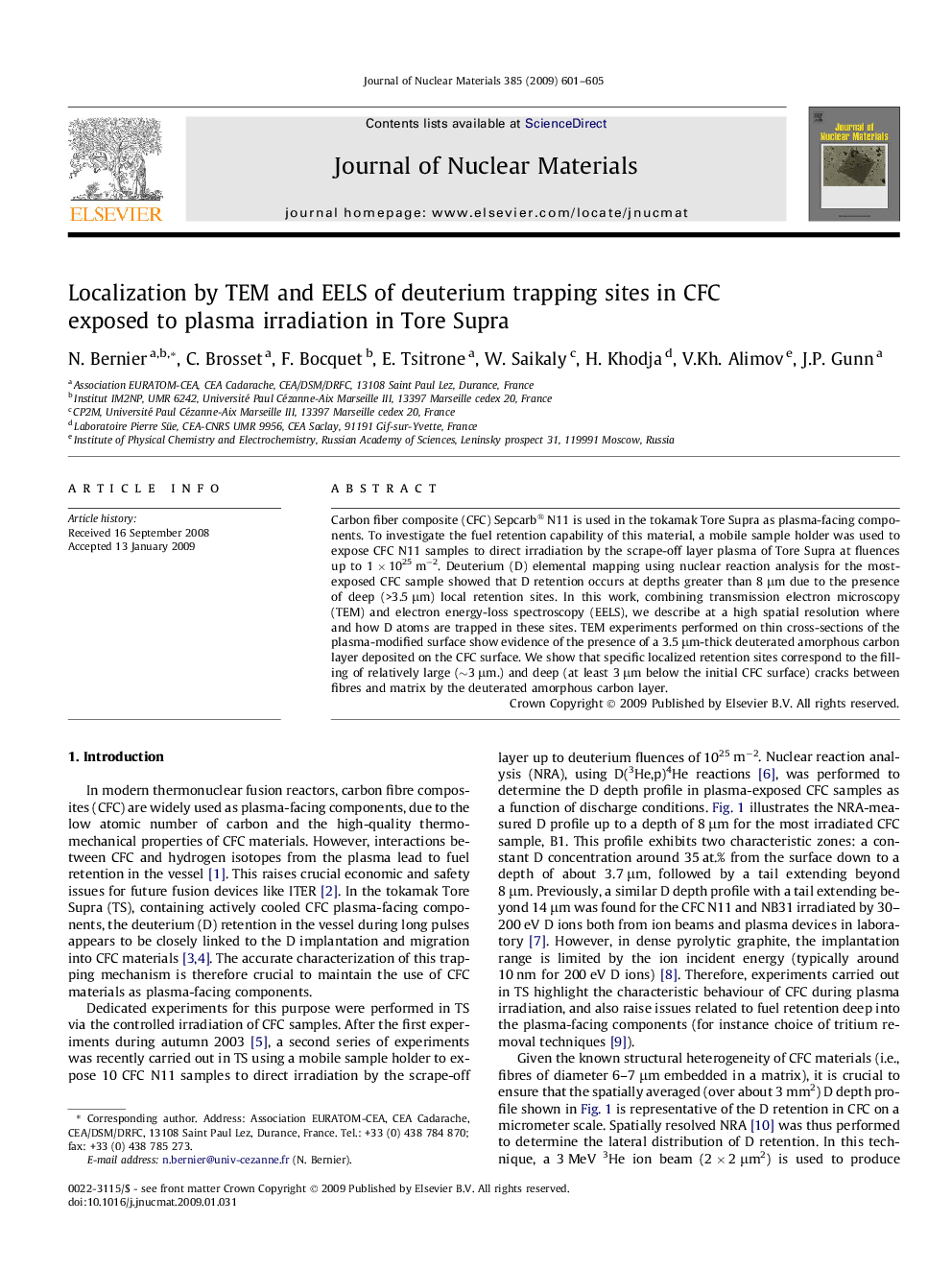| کد مقاله | کد نشریه | سال انتشار | مقاله انگلیسی | نسخه تمام متن |
|---|---|---|---|---|
| 1568132 | 999885 | 2009 | 5 صفحه PDF | دانلود رایگان |

Carbon fiber composite (CFC) Sepcarb® N11 is used in the tokamak Tore Supra as plasma-facing components. To investigate the fuel retention capability of this material, a mobile sample holder was used to expose CFC N11 samples to direct irradiation by the scrape-off layer plasma of Tore Supra at fluences up to 1 × 1025 m−2. Deuterium (D) elemental mapping using nuclear reaction analysis for the most-exposed CFC sample showed that D retention occurs at depths greater than 8 μm due to the presence of deep (>3.5 μm) local retention sites. In this work, combining transmission electron microscopy (TEM) and electron energy-loss spectroscopy (EELS), we describe at a high spatial resolution where and how D atoms are trapped in these sites. TEM experiments performed on thin cross-sections of the plasma-modified surface show evidence of the presence of a 3.5 μm-thick deuterated amorphous carbon layer deposited on the CFC surface. We show that specific localized retention sites correspond to the filling of relatively large (∼3 μm.) and deep (at least 3 μm below the initial CFC surface) cracks between fibres and matrix by the deuterated amorphous carbon layer.
Journal: Journal of Nuclear Materials - Volume 385, Issue 3, 15 April 2009, Pages 601–605